Outlook has long been the standard for business email and scheduling. For millions of companies, it remains a reliable hub for daily communication and calendar management. And when paired with the right CRM, Outlook becomes much more than just an inbox.
On its own, Outlook keeps teams connected through email and meetings. What it doesn’t cover is customer relationship management.
CRM integrations close that gap. With the right setup, Outlook can log customer interactions automatically, turn emails into contacts, and link conversations directly to deals or projects. Calendar events sync into the CRM, so follow-ups and meetings sit alongside the customer record.
You just need the right CRM.
In this guide, we’ll explore the CRMs that work best with Outlook.
Capsule CRM software + Outlook
Outlook is a daily workspace for millions of professionals. But for businesses that rely on customer interactions and sales follow-ups, Microsoft Outlook alone doesn’t go far enough.
Capsule CRM helps here with a lightweight, effective add-in that brings customer data, tasks, and opportunities directly into the Outlook environment.
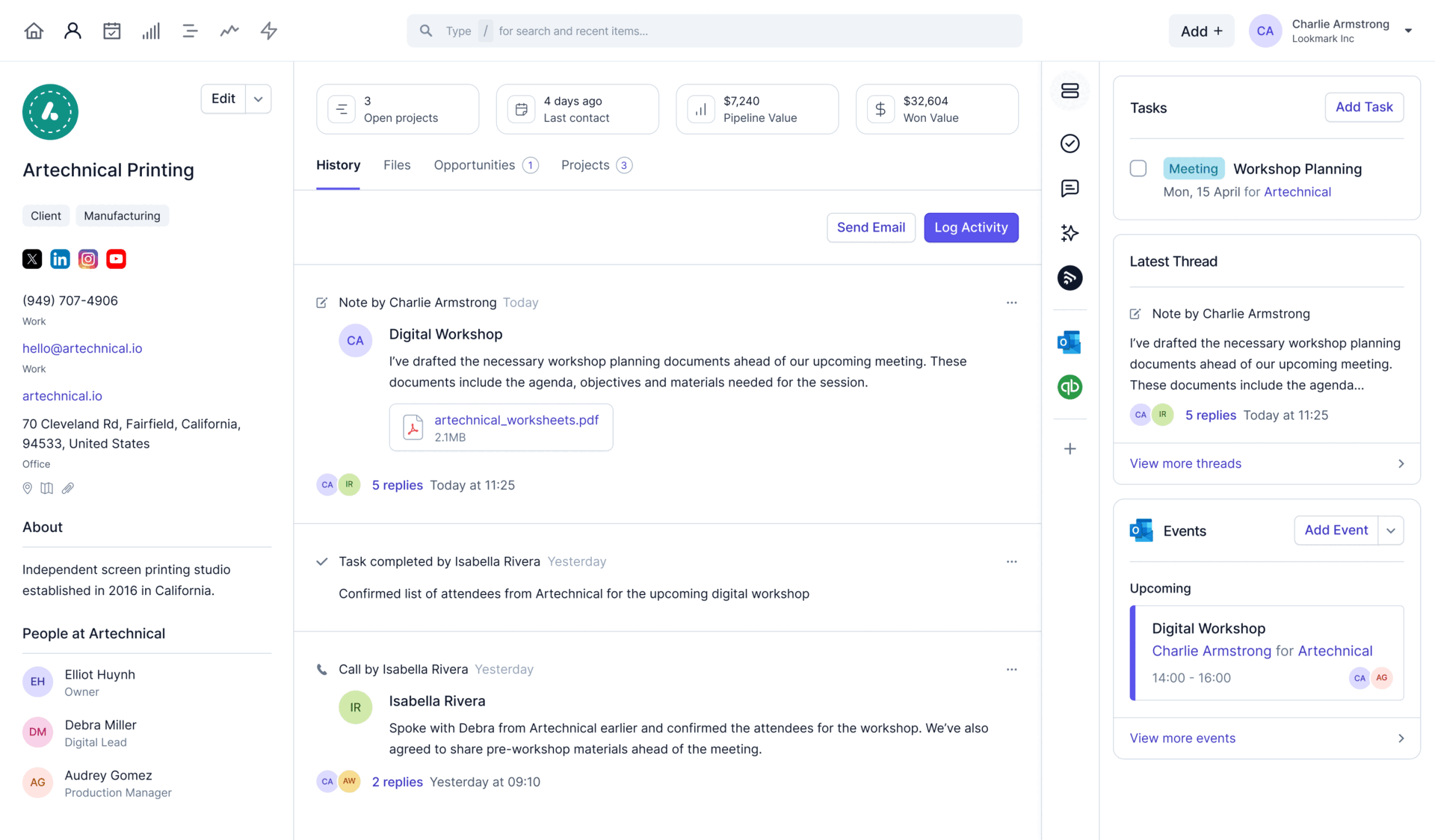
It’s a solution designed to feel natural, without the complexity often associated with larger CRM platforms.
Setup and availability of Outlook CRM integration
The Capsule Outlook Add-in can be installed directly from Microsoft AppSource. It’s available on all Capsule plans and works seamlessly across Outlook Web, Windows, Mac, iOS, and Android.
A key detail: the integration requires a Microsoft 365 Business or Commercial subscription.
Personal, Family, or on-prem Exchange accounts aren’t supported, which is an important limitation to note upfront. Once installed, connecting Capsule to Outlook is straightforward – users authenticate their Capsule account, grant permissions, and the add-in is ready to use within minutes.
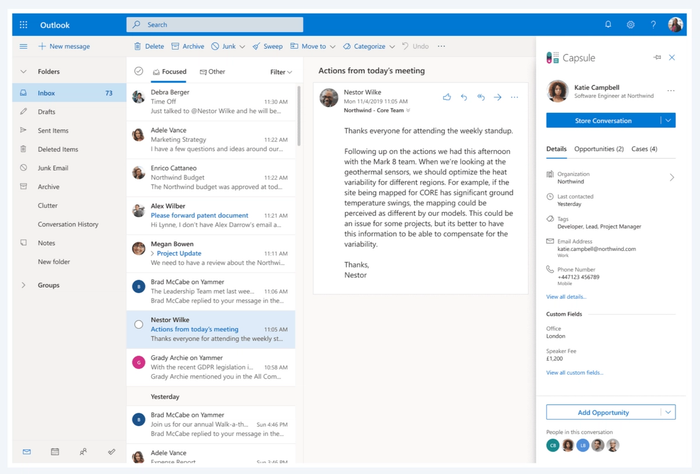
The add-in can also be pinned to the Outlook sidebar, giving teams constant visibility of CRM records while they process emails. This eliminates the stop-start workflow of switching between the inbox and CRM tabs.
Core features, including calendar
- Email capture and storage: Save entire conversations from Outlook directly into Capsule, where they’re linked to the right contact. With the “conversation tracking” feature, future replies in the same thread are automatically stored.
- Contact management: Add new people or organizations to Capsule straight from incoming emails. Capsule even supports merging new email addresses with existing contacts, helping teams maintain clean records.
- Tasks, projects, and opportunities: Create follow-up tasks, open opportunities, or new projects without leaving the message view.
- Calendar sync: Capsule integrates with Outlook Calendar to display past and upcoming events within contact timelines. Meeting details – including descriptions, Teams links, and attendees – are logged as activities, keeping communication and scheduling aligned in one place. Attendees not yet in Capsule can be added instantly as contacts.
- Automatic email storing: On Growth, Advanced, and Ultimate plans, Capsule can auto-store all emails for a given contact. This feature gives teams a full history of communication without manual logging.
Together, these features turn Outlook into a live hub of customer insights.
What users say about the best Outlook CRM
User reviews highlight Capsule’s ease of use and reliability. One Marketplace reviewer described it as an “absolute game changer,” noting how emails and calendar events track against contacts “with very minimal effort.”

Another praised the add-in for being “far better than Salesforce’s Outlook add-in,” appreciating how diary records sync cleanly.

Other feedback emphasizes its intuitive flow: “Really easy to use, it just flows. Love the Outlook add-in feature for attaching emails,” one G2 user wrote.

Another described Capsule as the “perfect CRM for our needs in every respect,” citing the Outlook integration alongside FreeAgent support as indispensable.

The recurring theme is simplicity. Capsule’s Outlook add-in doesn’t overwhelm with unnecessary functions, but instead delivers exactly what small and mid-sized businesses need: a clean, functional way to align email, calendar, and CRM.
Beyond the basics
Capsule’s Outlook integration also supports customization.
Businesses can tailor fields, tags, and pipelines to match their processes, and those elements flow naturally into the Outlook add-in.
Combined with Capsule’s integrations with QuickBooks, Xero, Mailchimp, and other tools, Outlook becomes part of a wider connected ecosystem.
For mobile teams, the fact that the add-in works on Outlook for iOS and Android means customer interactions are captured no matter where the email arrives. Capsule’s 99.99% uptime and strong focus on data security add an extra layer of confidence for SMBs managing sensitive client communications.
Why Capsule stands out – more than affordable CRM solution
Many CRMs offer Outlook integrations, but Capsule’s approach stands out for three reasons:
- Simplicity → Setup takes minutes, and the interface is intuitive enough that teams actually use it daily.
- SMB focus → Unlike Salesforce or HubSpot, Capsule doesn’t overload smaller businesses with enterprise-grade complexity.
- Value → With pricing starting at $18/user per month, Capsule offers a cost-effective way to connect Outlook with a powerful CRM system.
For SMBs looking for a CRM that feels like a natural extension of their inbox, Capsule remains the best choice.
Pipedrive
Pipedrive offers several ways to bring CRM directly into Outlook. The official “Pipedrive for Outlook” add-in lets users create new contacts and activities straight from their inbox, while third-party options such as Pipelook or SaySync expand functionality with task management features and opportunity management tools.
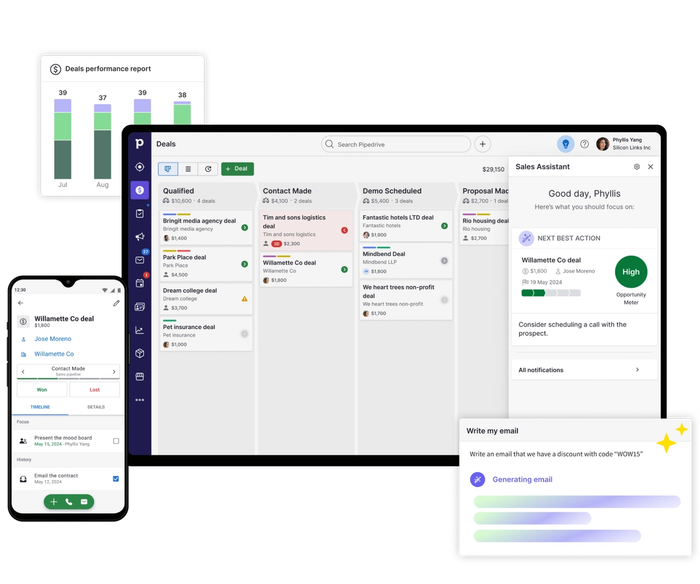
Beyond the add-in, Pipedrive also supports native email and calendar sync through Office 365 or IMAP, with Smart Bcc available as a fallback. This setup means customer emails and contact records flow smoothly into the CRM.
Teams benefit from access to pipeline management, email templates, and basic sales automation. The platform is often seen as an affordable CRM solution compared to enterprise systems like Microsoft Dynamics or SalesOutlook CRM, while still offering robust features for lead capturing, lead progression, and team collaboration.
The limitation is that feature depth varies by plan and sync setup – some advanced sales automation or reporting tools, like Excel reports or data analytics, require higher-tier paid plans. Still, for SMBs looking for a user-friendly Outlook CRM experience that saves time and supports everyday sales processes, Pipedrive remains one of the best Outlook CRM options.
HubSpot CRM
Not every business needs a heavyweight Outlook integration – but HubSpot’s add-in shows what a broader CRM software can deliver when email is only part of the workflow.
When installed inside Microsoft Office Outlook, it adds a sidebar where users can log emails, track opens and clicks, insert templates or snippets, and even schedule meetings. Sales teams also gain access to sequences and workflow automation, linking daily Outlook emails to larger email marketing and customer management strategies.
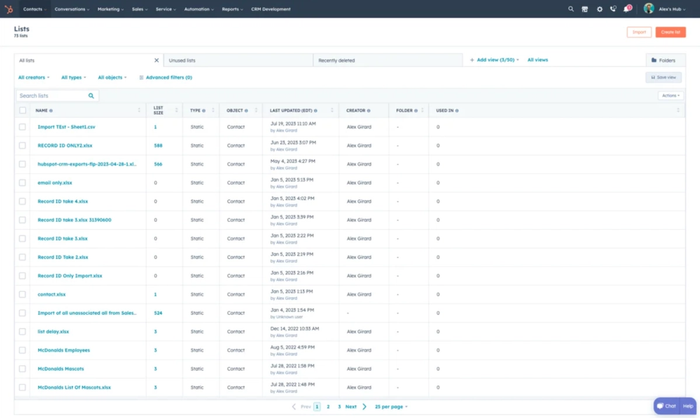
For companies already invested in Microsoft products and looking to tie Outlook into campaigns, lead nurturing, or analytics, HubSpot can fill the role of a complex CRM.
However, it’s worth noting that many of the more advanced capabilities – like sequences and detailed reporting – sit behind paid Sales Hub tiers, leaving the free plan with a more limited scope.
For organizations that need depth beyond Outlook but can handle the cost, HubSpot stands as a flexible option, even if lighter tools (like Capsule) may suit SMBs seeking simplicity.
Salesforce
Salesforce brings its CRM software into Outlook through the official add-in, which connects directly to records such as accounts and opportunities. From inside Outlook emails, users can log customer communication, track calendar events, create email templates, and manage tasks, giving both sales and support teams the context they need.
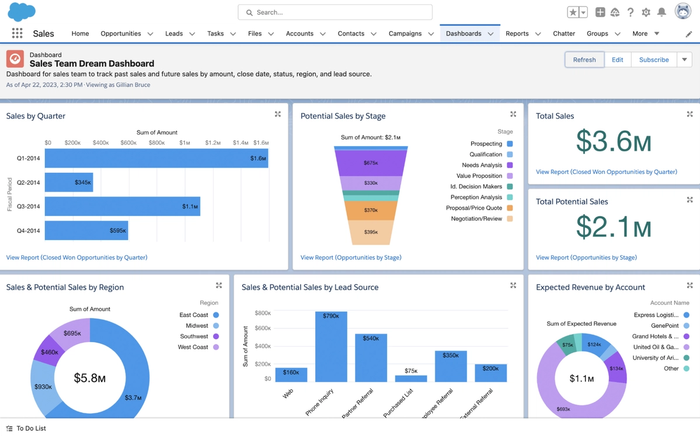
A key feature is Einstein Activity Capture, which automates the logging of emails and events – removing a lot of routine tasks and helping teams stay focused on selling. For larger organizations, the add-in also blends with broader Microsoft tools and products, aligning Outlook with Salesforce’s wider tech stack for marketing or lead scoring.
There are some caveats: Salesforce Inbox is a paid add-on, not included in all editions, and the older plugin is being phased out. Still, for enterprises already running Salesforce across departments, the integration makes Outlook part of a solid system that improves team productivity and ties email workflows into wider business processes.
Zoho CRM
What if your Outlook inbox could double as a gateway to full CRM software? With the Zoho CRM Outlook plugin – available across all plans – you can add contacts directly from emails, log conversations, and view engagement history. For small teams, it’s an affordable CRM solution that ties basic Outlook usage to lead management and light automation.
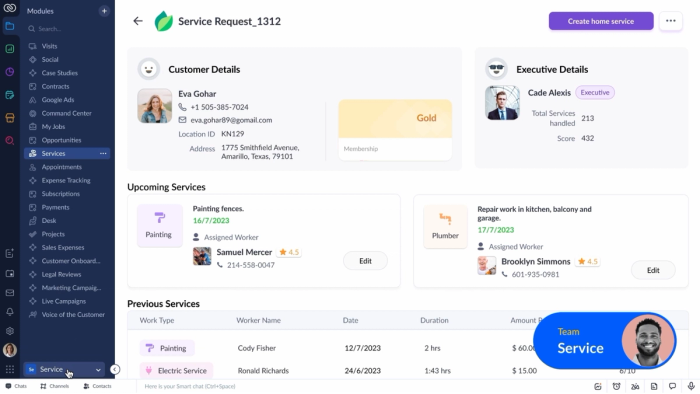
Because Zoho is a fully fledged CRM, users can expand beyond the plugin into pipeline management and reporting as their needs grow. The plugin is simple enough to start with, yet it plugs into a much larger ecosystem of features, from opportunity tracking to campaign tools.
The limitation is scalability: the free plan covers the essentials, but advanced workflow automation, analytics, and deeper integrations come with higher tiers. For SMBs needing a low-cost way to connect Outlook with CRM systems, Zoho remains a practical on-ramp.
Insightly
Insightly offers an Outlook sidebar plugin that brings CRM software features into the inbox. Users can view and manage contacts and log correspondence directly to customer records.
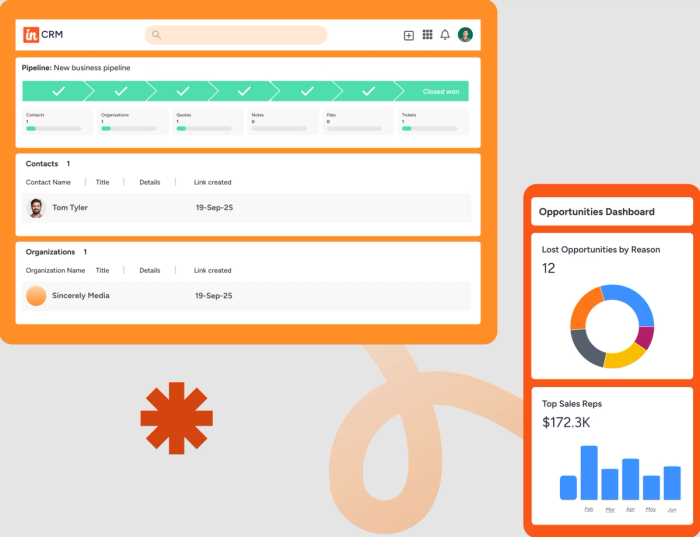
Project-driven organizations often value Insightly’s focus on combining contact management with opportunity management and project context, making it more than just an email logging tool. Teams can track leads, attach emails to opportunities, and maintain visibility across the sales process.
That said, setup details are less clearly documented compared to other Outlook CRM integrations, and many of the more advanced capabilities are tied to paid tiers. For businesses already invested in Insightly’s broader platform, the plugin extends Outlook into a practical workspace, but it may feel limited as a standalone add-in.
Conclusion
Outlook remains a trusted tool for email and scheduling, but it gains real power when paired with a CRM. From Salesforce and HubSpot with their enterprise-level automation to Zoho and Pipedrive offering affordable entry points, there’s no shortage of options. Each solution adds something extra to Outlook.
For many SMBs, though, the complexity of these platforms can outweigh the benefits.
Capsule CRM takes a different route: instead of overwhelming users with features, it makes the essentials – email logging, contact management, calendar sync – work smoothly inside Outlook. The result is less admin and a CRM system that teams actually want to use.
If Outlook is already central to your daily workflow, Capsule shows how a simple integration can turn it into a smarter, more connected space for managing customer relationships.
FAQ
What is CRM in Outlook?
CRM in Outlook refers to connecting customer relationship management software directly into your Outlook inbox and calendar. With an add-in, you can log emails and link messages or events to deals and projects without leaving Outlook.
Is Outlook a good CRM?
On its own, Outlook is not a CRM. It’s excellent for communication and scheduling, but it doesn’t offer sales pipeline management or customer data tracking. With the right integration – such as Capsule CRM – it can work as part of a complete CRM setup.
Can Outlook act as a CRM?
Outlook can support basic contact and email management, but it isn’t designed to be a fully fledged CRM. By connecting it to CRM software, Outlook emails and meetings become part of a wider system that manages leads and customer records.
What is the best CRM for Outlook?
The best CRM for Outlook depends on your team’s needs. Enterprise companies often turn to Salesforce or HubSpot for their advanced automation. Smaller businesses usually prefer Capsule CRM because it’s lightweight and integrates seamlessly with Outlook while still covering essential CRM functions.




